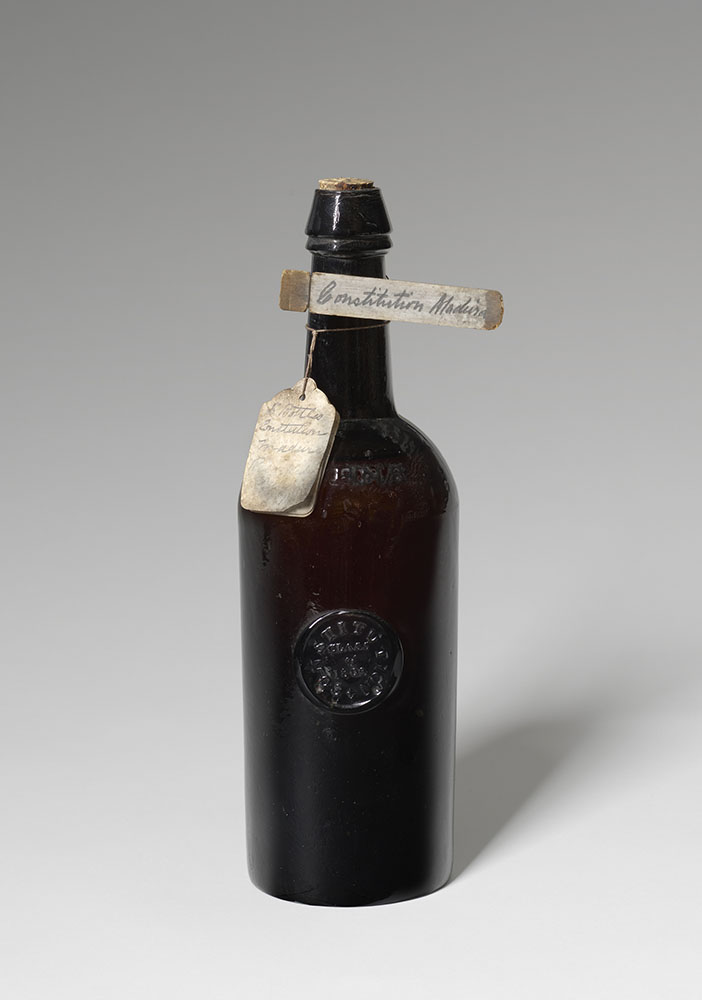A bottle of Madeira wine embossed with the seal “Constitution Class of 1802” in the museum’s collection has a rich, complex history waiting to be uncorked.
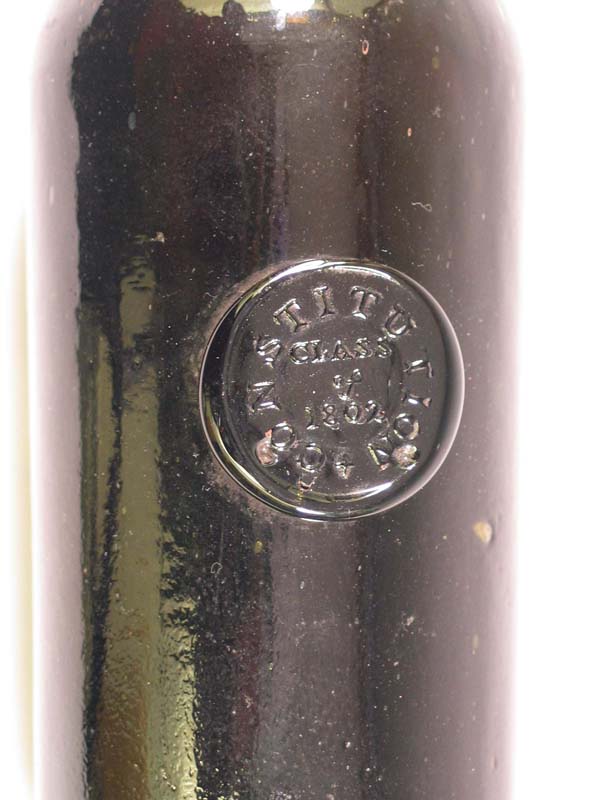
A December 13, 1886, Boston Evening Transcript excerpt provides some context about the bottle. The Harvard Class of 1802 would meet for dinners every fortnight at the Maverick House in East Boston and the bottles of wine shared at those dinners had the seal “Class of 1802” and bore the name of the ship that carried it. Seemingly, this bottle was carried on Constitution from Madeira and ended up with the Saltonstalls due to their connection to the Harvard Class of 1802.
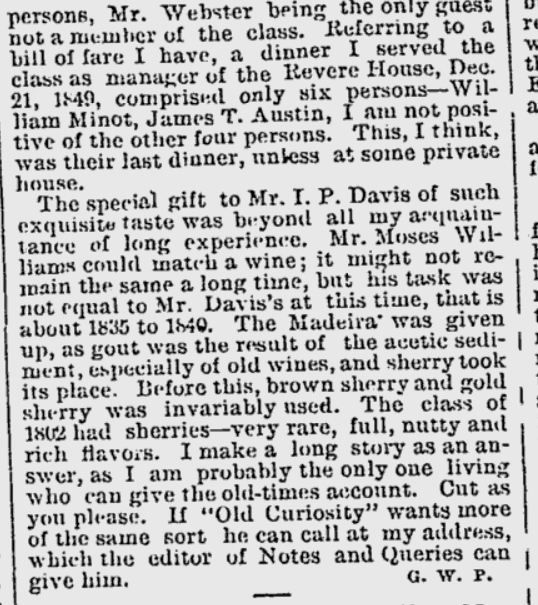
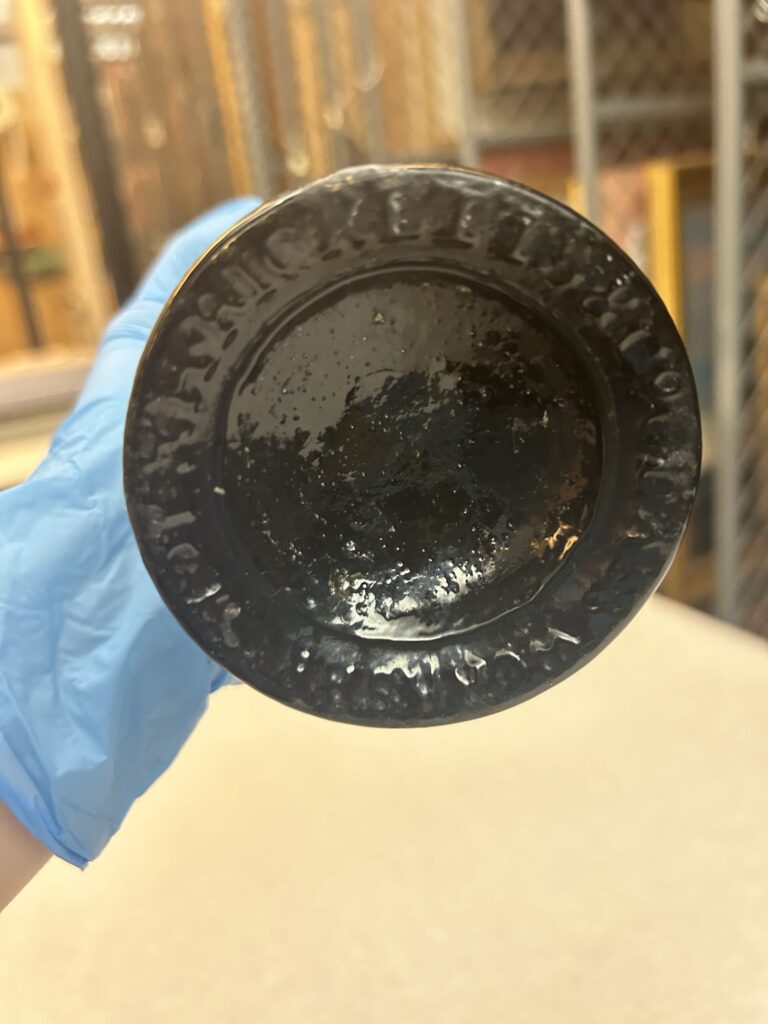
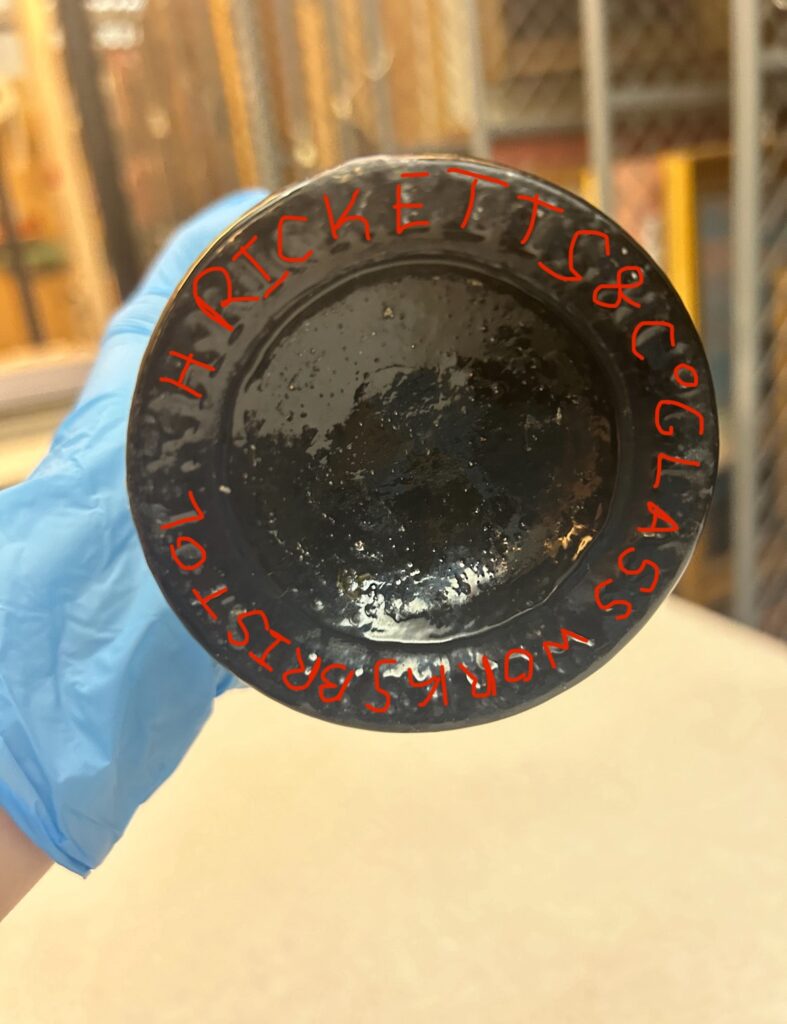
According to the ship’s logs, Constitution visited Madeira from June 29, 1838, to July 5, 1838, and again from June 23, 1844, to June 29, 1844. However, there is a lack of evidence to support that this bottle was acquired by the crews of Constitution during those times. Additionally, it is possible the “Constitution Class of 1802” seal was added at any point after the bottle was created. If this bottle didn’t sail on Constitution, then what is its connection to “Old Ironsides”?
The breakthrough comes from a 1902 book, where the author states that a wine called Constitution, was designated as the Harvard class wine and bottles were embossed with a “Constitution Class of 1802” seal:
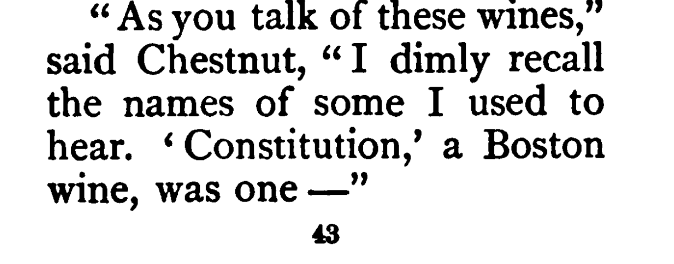
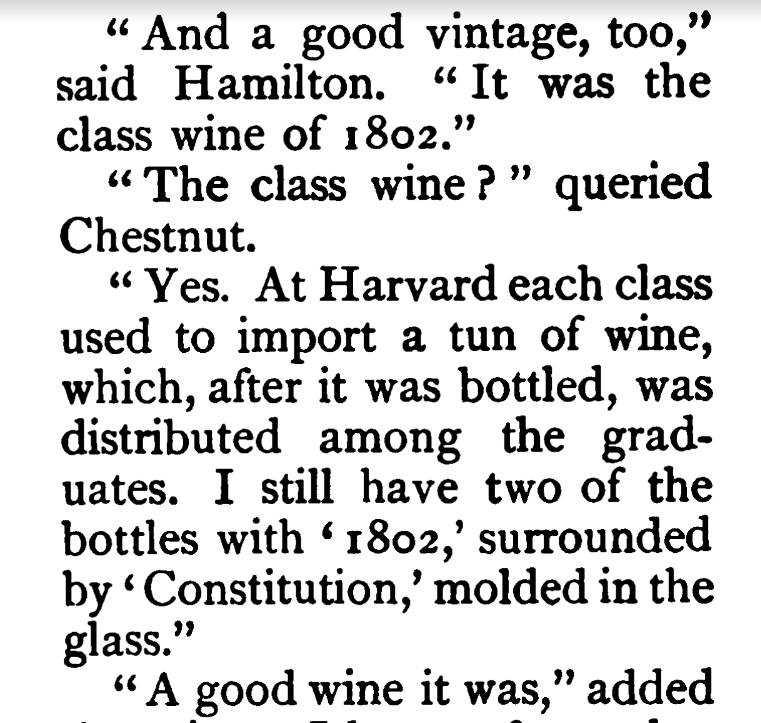
“The legendary frigate Constitution, the oldest ship in the world that is still afloat, was also baptized with Madeira wine. Together with its special sandwich live oak planking construction this Madeira wine treatment might have contributed to the invulnerability of ‘Old Ironsides.’ As a remembrance of this event, the Madeira vintage of 1802 has been named Constitution as well.”
After uncovering that Constitution is the name of the wine, it was possible to find repeated references to Constitution Madeira on contemporary wine lists and other newspaper excerpts from the mid-to-late 1800s:
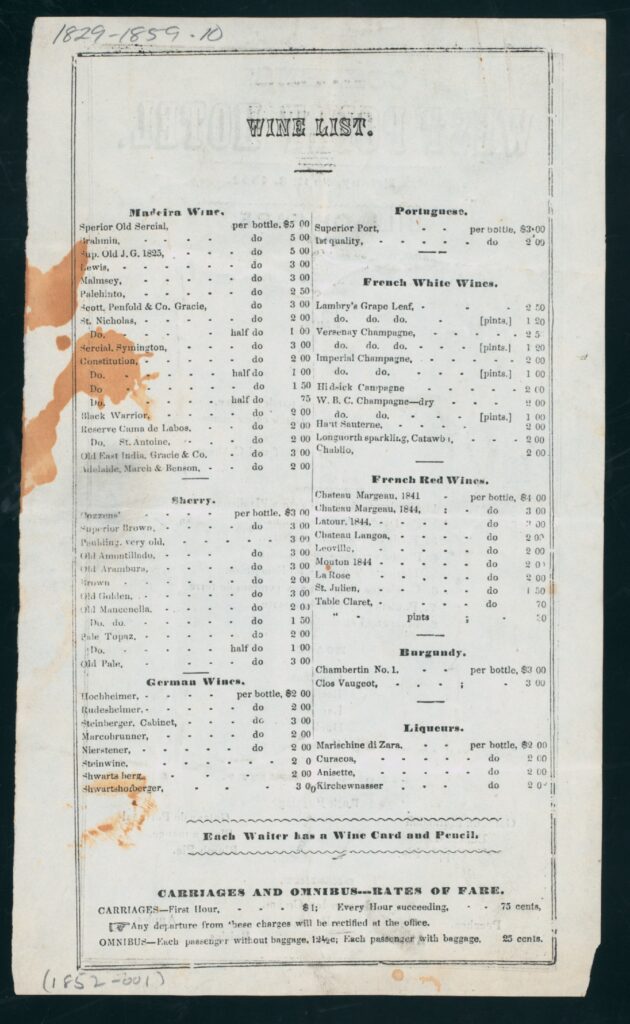
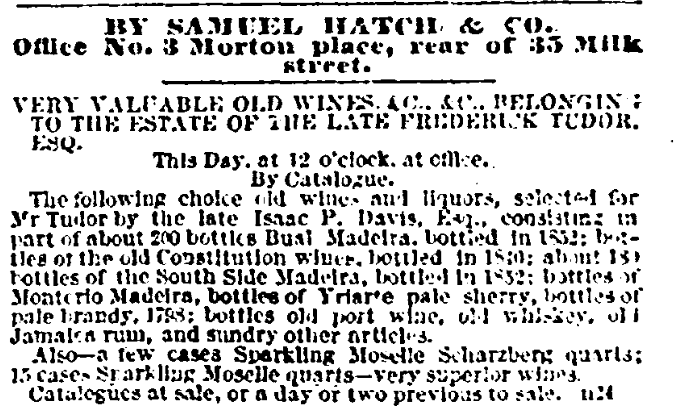
Reexamining the wording in the Boston Evening Transcript note, it becomes clear that G.W.P. misinterpreted the meaning behind “Constitution” on the wine bottles. From his description, it is clear he saw the bottles first-hand. However, his use of “likely” and “some,” shows a degree of uncertainty in his description of how these wines ended up in Boston:
“The wines were named from the ships in which the ‘pipes and casks’ of wine were brought home; very likely the Constitution was brought home by some officers of the navy as private stores.”
The first part of this sentence is important because it is correct about the Constitution wine: the wine was named after the ship, but not because the ship carried the wine. From finding the additional context, it is clear that while this particular bottle never sailed on Constitution, it bears a connection to the ship.
_______________________________________________
1. Bill Lindsey, Bill Lockhart, Bob Brown, and Carol Serr based on: Bill Lockhart, Bill Lindsey, Beau Schriever, and Carol Serr, “The Ricketts Family Glass Firms,” Society for Historical Archaeology, 2019, https://sha.org/bottle/pdffiles/RickettsFirms.pdf.
The Author(s)
Kelli Aquino
Curatorial Assistant, USS Constitution Museum
Kelli Aquino is Curatorial Assistant at the USS Constitution Museum.
